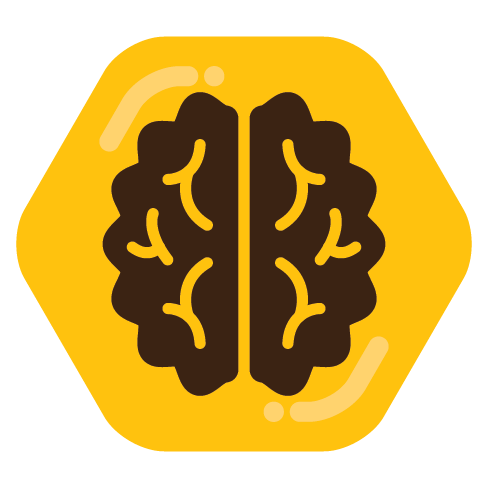- 10 Posts
- 566 Comments

 15·2 months ago
15·2 months agoI agree with the comments on this forum (https://www.thehighroad.org/index.php?threads/mushrooming-22-lr-case-heritage-rough-rider.891807/) that the cylinder could have a machining defect. (Basically a headspace issue, also but kinda not. The cartridges are sitting too deep in the cylinder itself.)
If there is room for the brass to get pushed back far enough for it to mushroom out, something is seriously wrong. The issue could manifest from a machining error as small as 5-10 thou, I am speculating.
My first thought was excessive chamber pressure, but the bulging would be much worse around and behind the rim itself if that were the case.
The bullet and the brass get pushed in opposite directions and if the brass can move, it will move before it deforms. If it deforms, it’ll deform at the weakest spot first, like we see in your pic. (Excessive chamber pressure tends to expand the brass and lock it in place. With center-fire, it’ll blow the primers out or have a hole punched in them from the firing pin first. With rim fire, the pressure pushes back on the rim.)
Also, check for excessive slop with the cylinder. If it can move forwards and backwards too much, that could also telling of issues with other parts of the gun. (Like I mentioned before, it doesn’t take much for a gun to be out of spec enough to cause issues with brass.)
Mixed theories on that, and most are older.
On earlier computers, I had several ICs walk themselves out of sockets due to repeated thermal expansion cycles. Keeping the computer turned on eliminates most of that.
Mechanical wear was another problem. Booting a computer was extremely taxing on old HDDs and floppy drives.
Edit: Mechanical stuff also takes much more power to spin up and get running. The energy savings might be measurable if you just kept a computer running and didn’t power cycle it everyday.
Most power supplies are really well designed now but they had a tendency to spike power briefly in when turned on. This was especially bad for older capacitors but also not healthy for the ICs. This still happens to a degree, but it’s not an issue.
Now that boot times are reasonably fast and most everything is solid state and power managed really well, turning a computer off is fine.
However, I just assume most electronics now just go into some type of deep sleep mode unless fully disconnected from any power source. That likely isn’t true in many cases, but I consider it healthy level of paranoia.
Dopamine regulation as a whole could be considered “Dopamine Responsibly”, the way I see it.

 222·3 months ago
222·3 months agoI doubt he got bored. That mechanical hand probably felt like someone else’s until the nerves fully adjusted.

 3·3 months ago
3·3 months ago(The correctly used double negative was confusing for me at first, btw.)
You make a very interesting point I haven’t ever thought about before.
While I have always considered myself a patriot to a mild degree, I never associated it with tribalism directly. Even with the many faults of all countries, it’s OK to be proud of where you are from. (It does make perfect sense that tribalism is the end goal of state sponsored patriotism though.)
In my mind, the fine line after patriotism was usually nationalism where tribalism runs deep and hate-based rhetoric becomes extremely effective. The definition of a patriot is somewhat twisted at that point. (ie: unless you believe [insert something random], you aren’t actually a patriot and therefore an enemy of the state.)
I am not agreeing or disagreeing with you, btw. Your perspective is something interesting to think about, s’all. (I am leaning on the agreement side, FWIW.)
(For the people reading this that may not realize that I am using the word “nationalism” in a negative context, I am. If that chaps your hide still, replace it with ‘christian nationalism’ or ‘white nationalism’ and fuck off. Everyone else, sorry for the disclaimer.)
It’s the budget version of Zootopia.

 101·5 months ago
101·5 months agoA $1.1 trillion spend for Russia might actually get them a partially working aircraft carrier.
I seem to have missed the question.
That combo is too inefficient for me. I like coffee, but if I am prioritizing caffeine and still want something more sugary, an energy drink would be fine.
So, a bottle of water and a large Red bull would be sufficient and easier to transport, while also staying in-line with what I would carry around if I really wanted multiple experiences.

 6·5 months ago
6·5 months agoIt would be a protostar, I believe. As the gas required for the star collapses in to itself from gravity, it will get still get super hot as density increases. It still takes a bit for the heat and pressure to reach a point to start fusion.
Edit: Conflicting report that it may have started fusing hydrogen: https://www.iflscience.com/it-looks-like-weve-found-betel-buddy-betelgeuses-suspected-companion-star-80082

 5·5 months ago
5·5 months agoYou could probably map resonance artifacts, but you have to isolate layers that were printed at the same speed and direction. However, the second you tighten a belt or screw, that pattern will change and I am not sure how consistent resonance patterns would be on a bed slinger. (The quantity and density of printed plastic may change the resonant characteristics of the entire printer. This may be less of an issue on a core xy.)
Thinking waaay outside the box… In some cases, I have seen extruder gear marks on the filament create artifacts on a print. Every gear pattern should be unique, but measurable differences would probably be micron or sub-micron.
Maybe you could map the surface of textured beds as I seriously doubt that those patterns would be consistent and more prone to randomness from the factory.
There are a ton of conditions that could generate unique artifacts on a print, now that I think of it. Hell, even a printers PID tuning can leave visible and repeatable errors.
The root cause is usually a weak lower esophageal sphincter. Water creates additional pressure in the stomach which causes acid reflux. For me anyway, this is only an issue if I haven’t eaten, drink water and then lay down. (It’s the laying down bit that is probably key.)
Eating non-junk, low acid foods actually helps relieve some heartburn for me in some cases.
If your stomach really is empty and you have chronic heartburn, this may not be the best solution. (It’s a gamble for me, anyway.)
In normal circumstances, water does temporary suppress hunger for a bit, for me.

 3·5 months ago
3·5 months agoThe fan is good, but the orientation seems like it would struggle pushing air between the drives. Maybe a push-pull setup with a second fan?

 1·5 months ago
1·5 months ago(For others reading this, this is a perfect followup to my comment here explaining the “why”, while this is an excellent view into the “how” and picks up the bits I dropped about Ohms Law.)

 11·5 months ago
11·5 months agoPin pitch is pin size and/or spacing. With physical plugs, you start to hit limitations with how small the wires can get while still being durable enough to withstand plugging/unplugging hundreds of times.
Drop losses. (I am keeping this at an ELI5 [more like ELI15, TBH] level and ignore some important stuff) Every electronic component generates heat from the power it uses. More power used usually means more heat. Heat requires physical space and lots of material to dissipate correctly. Depending on the materials used to “sink” (move; direct; channel) heat, you may need a significant amount of material to dissipate the heat correctly. So, you can use more efficient materials to reduce the amount of power that is converted to heat or improve how heat is transferred away from the component. (If you are starting to sense that there is a heat/power feedback loop here, it’s because there can be.) Since a bit of power is converted to heat, you can increase the power to your device to compensate but this, in turn, generates more heat that must be dissipated.
In short, if your device runs on 9v and draws a ton of power, you need to calculate how much of that power is going to be wasted as heat. You can Google Ohms Law if you would like, but you can usually measure a “voltage drop” across any component. A resistor, which resists electrical current, will “drop” voltage in a circuit because some of the current (measured in amperage) is converted to heat.
I kinda smashed a few things together related to efficiency and thermodynamics in a couple of paragraphs, but I think I coved the basics. (I cropped a ton of stuff about ohms law and why that is important, as well as how/where heat is important enough to worry about. Long story short: heat bad)







Vyvanse wasn’t a pleasant experience for me. It felt like it crushed all of my dopamine receptors and life got really boring, really quick. (Obviously, this isn’t everyone’s experience, but it was mine.) It took a few weeks for my brain to recover.
I didn’t try switching because I wanted to (adderall works just fine for me), it’s because the adderall supply was low in my area for a bit and I wanted it find an alternative.